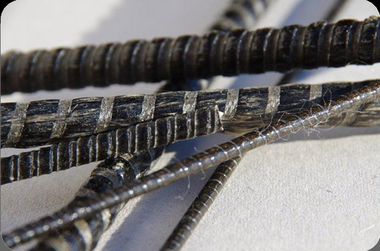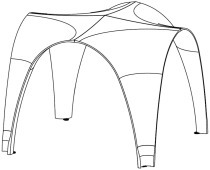Lightweight construction with fiber-reinforced
composites – an overview of the market
The future of fiber-reinforced composites in the construction industry refers to the use of materials such as glass fibers, carbon fibers, basalt fibers and natural fibers that are bonded to a matrix of epoxy resin, polyester or other polymers to create lightweight yet strong and stable structures. These materials are used in various applications in the construction industry, such as the production of precast concrete elements or the refurbishment and strengthening of reinforced-concrete elements. A major advantage of fiber-reinforced polymers is their low weight, which facilitates transport and assembly on site and reduces the overall load on the structure. Fiber-reinforced composites can achieve high strength levels exceeding even those of steel while at the same time being lower in weight. Unlike conventional construction materials such as steel or concrete, fiber-reinforced composites are susceptible neither to rust nor to corrosion, resulting in a longer life and lower maintenance costs. Fiber-reinforced composites can be manufactured to virtually any shape, which allows the design of complex structures and forms. As a result of their low density and excellent insulation properties, fiber-reinforced composites can help improve the energy efficiency of buildings. Non-metallic types of reinforcement for mineral and polymer matrix materials are even today produced in various forms and geometries as well as in large volumes. The DAfStb guideline for non-metallic types of reinforcement, which is expected to be published in the near future, will make a further contribution to market penetration.






